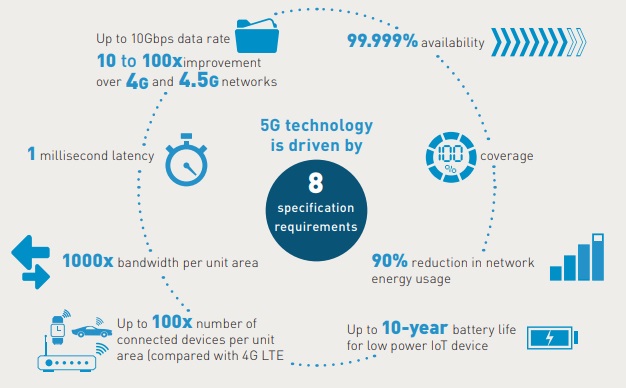20Shift: Your Daily Dose of Insight
Stay updated with the latest trends and news across various domains.
5G: The Speedy Rabbit in a World of Turtles
Discover how 5G is transforming the digital landscape faster than ever—leaping ahead while others crawl!
Understanding 5G Technology: What Sets It Apart from 4G?
5G technology represents a significant leap forward from its predecessor, 4G, in terms of speed, latency, and overall connectivity. While 4G networks offer impressive download speeds, typically around 100 Mbps, 5G can achieve speeds exceeding 1 Gbps, making it capable of supporting more devices simultaneously. This enhanced capacity is crucial as our dependence on mobile connectivity continues to grow, especially with the increasing demand for streaming services, real-time gaming, and smart devices.
One of the most notable features of 5G technology is its incredibly low latency, which can drop to as low as 1 millisecond compared to the 30 to 50 milliseconds typically associated with 4G. This reduction in latency opens the door for innovations in various fields, including autonomous vehicles, telemedicine, and the Internet of Things (IoT). As we delve deeper into understanding 5G, it becomes evident that these advancements will not only improve personal user experiences but also revolutionize industries and their operations.

The Impact of 5G on Everyday Life: Are You Ready for the Change?
The rollout of 5G technology is set to revolutionize the way we experience daily life, enhancing everything from communication to transportation. With its lightning-fast speeds and lower latency, 5G will enable seamless streaming of high-definition content, making video calls more fluid and online gaming more immersive. In addition, this next-generation network will empower the rise of smart cities, allowing interconnected devices to communicate in real time. Imagine your home appliances working together to optimize energy usage or your car receiving traffic updates instantly to adjust its route.
However, as we embrace the benefits of 5G, we must also consider the implications it has on our lifestyle. Are you ready for the change? The integration of 5G technology may lead to increased screen time and dependence on digital connectivity. Furthermore, privacy concerns could rise as more devices become interconnected. To navigate this new landscape, it's essential to stay informed and adopt best practices for digital security, ensuring you enjoy the advantages of 5G while minimizing risks. By adapting to these changes, we can fully harness the potential of 5G technology in our everyday lives.
5G vs. Other Networks: How Much Faster Can We Go?
The advent of 5G technology marks a significant leap in mobile network capabilities compared to its predecessors, such as 4G and 3G. While 4G LTE offers download speeds of around 100 Mbps under optimal conditions, 5G networks can potentially achieve speeds exceeding 10 Gbps, depending on the network configuration and location. This means that users can download a full-length movie in just a few seconds, opening up endless possibilities for applications like augmented reality, virtual reality, and real-time data processing.
However, speed isn't the only factor that makes 5G stand out. Its ability to handle more devices simultaneously allows for improved connectivity in densely populated areas, setting it apart from previous generations. The lower latency of 5G—around 1 millisecond compared to 20 milliseconds for 4G—also enhances real-time applications, such as online gaming and autonomous vehicle communication. As we explore the future of mobile networks, the comparison between 5G and older technologies highlights not just speed, but also the enhanced efficiency and broader potential of the next generation of connectivity.